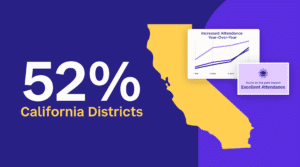
Featured Resource
Why Over Half of California School Districts Trust SchoolStatus
Read More >Join Mission: Attendance to reduce chronic absenteeism in 2025-26! >> Learn How <<






How many times during the day do you hear the words, “I don’t have time to talk”? As an instructional coach, those words can determine the direction for effective instructional planning and reflective practice.
Co-planning and co-constructing meaningful instructional practice with instructional coaches encourages teachers to think aloud and talk about their plans in a no-risk environment. In many ways, these discussions are the rehearsals with an opportunity for teachers to ask questions in real time. These rehearsals help the teacher and coach collaborate, communicate and collectively problem-solve so the performance can be less stressful, especially if new content or new skills building is involved. It is the process where the coaches help teachers implement effective evidence-based instructional practices and then talk about what worked well in the classroom without fear of being evaluated.
This sounds like such a reasonable process to follow. Plan with coaches (before), watch the “dry run” (during) and then meet together to discuss how well the goals for that day were met (after). Unfortunately, besides the collaboration that must take place for this process to be successful, coaches and teachers must be able to communicate effectively. The teacher and coach must have a trusting relationship; that is, the teacher must be receptive to the planning and willing to share ideas. The coach must be a good listener and offer “side by side” support while encouraging the teacher to think “out of the box” and maximize his/her own learning.
Not all communication results in successful collaboration. Not all communication results in effective listening. As George Bernard Shaw said, “The single biggest problem with communication is the illusion that it has taken place.”
Instructional coaching is not about preparing students for test taking; instructional coaching is about facilitating the process that enables practitioners to think about their own actions and instructional decisions. It’s about knowing how to help teachers recognize their own voices and to work together to ensure that those voices are heard in every classroom. It is making sure every student has the opportunity to work with teachers who collaborate, communicate, collectively problem solve, and engage in critical thinking, all twenty-first century skills that generate positive student outcomes and effective instructional practice.
Ellen Eisenberg is the Executive Director of the Pennsylvania Institute for Instructional Coaching (PIIC). PIIC, a partnership of the Annenberg Foundation and the Pennsylvania Department of Education, is a statewide resource for developing and supporting consistent, high-quality instructional coaching in Pennsylvania schools.
Check out our other guest blogs on this topic here and here.
 SchoolStatusSchoolStatus gives educators the clarity and tools they need to get students to class and keep them moving ahead. Through our integrated suite of data-driven products, we help districts spot attendance patterns early, reach families in ways that work for them, and support teacher growth with meaningful feedback. Our solutions include automated attendance interventions, multi-channel family communications in 130+ languages, educator development and coaching, streamlined digital workflows, and engaging school websites. Serving over 22 million students across thousands of districts in all 50 states, SchoolStatus helps teachers and staff see what matters, act with speed, and stay focused on students.
SchoolStatusSchoolStatus gives educators the clarity and tools they need to get students to class and keep them moving ahead. Through our integrated suite of data-driven products, we help districts spot attendance patterns early, reach families in ways that work for them, and support teacher growth with meaningful feedback. Our solutions include automated attendance interventions, multi-channel family communications in 130+ languages, educator development and coaching, streamlined digital workflows, and engaging school websites. Serving over 22 million students across thousands of districts in all 50 states, SchoolStatus helps teachers and staff see what matters, act with speed, and stay focused on students.
News, articles, and tips for meeting your district’s goals—delivered to your inbox.






